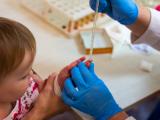Jun 26, 2009
World novel flu tally approaches 60,000
The global number of novel H1N1 cases climbed to 59,814 cases, including 263 deaths, the World Health Organization (WHO) reported today. The total reflects a 3,947 increase from the last update on Jun 24. Jurisdictions appearing on the list for the first time are Indonesia, Iran, Serbia, and the UK crown dependency of Guernsey. Countries reporting the highest increases since the last report include Chile, the UK, Mexico, Australia, and Canada.
[WHO update 54]
US pandemic flu count nears 28,000
The nation's number of novel flu cases rose to 27,717 cases and 127 deaths, the US Centers for Disease Control and Prevention (CDC) reported today. The tally represents 6,268 more cases and 40 more deaths than the last update a week ago. States reporting the highest number of cases include Wisconsin, Illinois, Texas, New York, California, Pennsylvania, and Massachusetts. New York has the most fatalities, 35, followed by California with 16.
[Current CDC numbers]
US may have 1 million pandemic flu cases
A surveillance expert from the CDC said yesterday at the agency's immunization group meeting in Atlanta that the true number of pandemic H1N1 cases in the United States could be as many as 1 million, the Associated Press (AP) reported today. Lyn Finelli said the projection was based on mathematical modeling and surveys from health officials. She told the Advisory Committee on Immunization Practices (ACIP) that 6% or more of the population from some urban areas could be infected with the virus.
[Jun 26 AP story]
Vaccine experts differ over vaccine delivery estimate
Robin Robinson, an official from the US Biomedical Advanced Research and Development Authority (BARDA) who addressed the ACIP group yesterday, projected that as many as 60 million doses of the pandemic H1N1 vaccine could be available by September, the AP reported today. However, others at the meeting said the estimate may be too optimistic.
[Jun 26 AP story]
Novel flu edging out seasonal strains in Australian state
The pandemic H1N1 strain is dominating seasonal flu strains in Victoria, according to a report from the Victoria Infectious Diseases Reference Laboratory (VIDRL) that covered last week. Of 138 influenza A samples tested, 60 were novel H1N1, 3 were H3N2, and 2 were seasonal H1N1. Victoria is the state with the most confirmed novel flu cases, 1,560 of Australia's 3,519. Experts predicted that the new flu strain might push out seasonal strains as the southern hemisphere's flu season progresses.
[VIDRL weekly flu surveillance report]
Part of UK moves away from pandemic flu containment
Health officials in England said pandemic flu response in two parts of the country will shift from a containment to a management strategy, the London Daily Mail reported today. The change, which affects London and West Midlands, means that schools will no longer close and that antiviral medication will no longer be given to close contacts of flu patients, only those who have illness symptoms. Also, most illnesses will be diagnosed clinically rather than through lab testing.
[Jun 26 Daily Mail story]
Sanofi begins pandemic vaccine production
Sanofi Pasteur, one of the five companies that are developing a novel H1N1 vaccine for the US market, said it began large-scale production on Jun 23, according to the company's Web site. The company will still need to conduct clinical trials, which it said in an earlier statement could take place as early as August. In late May the company received a $190 million order from the US Department of Health and Human Services to make bulk vaccine and conduct other activities.
[Sanofi timeline of novel flu vaccine developments]
Two workers were sick at Argentine pig farm
Animal health officials from Argentina said yesterday in a report to the World Organization for Animal Health (OIE) that two workers at a pig farm where the animals tested positive for novel H1N1 were sick between Jun 7 and 9, but did not seek medical care or undergo testing. The report said pigs started getting sick on Jun 15. The virus sickened 30% of the 5,586 pigs, but none have died. The facility has its own restocking system, and no pigs have entered from outside the farm since July 2008.
[Jun 25 OIE report]

















